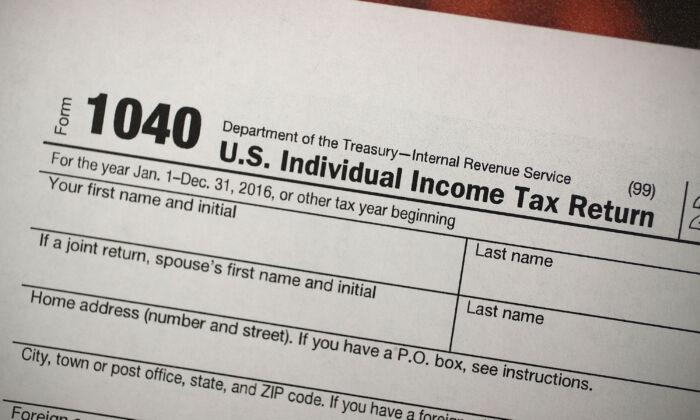The Constitution granted Congress the power to impose personal income taxes before the ratification of the 16th Amendment, but the 16th Amendment facilitated that power. This essay explains the amendment’s background and effect.
Direct and Indirect Taxes
The Constitution divides taxes into two categories: indirect and direct. Indirect taxes were those imposed on consumption (sales taxes and other excises), on crossing political boundaries (tariffs and tonnage), and on certain specific activities, such as the execution of legal documents (such as stamp taxes). Direct taxes were levies on the following:Individuals, both slave and free. Impositions on people were called capitations, head taxes, or poll taxes. Sometimes they imposed a fixed amount on every person, but often the sum depended on factors such as gender, age, status (free or slave), and ability to pay.
Real estate, including the number of windows in a house—then a sign of luxury.
Personal property, including livestock and household effects.
Wealth in general.
Proceeds from professions and occupations (often called “faculties”).
Congress’s Authority to Impose Direct and Indirect Taxes
The Constitution gave Congress very wide authority to tax. However, there were a few restrictions: All levies had to be for “general Welfare” purposes rather than for sectional or special interest purposes. Taxes could be imposed only to fund the powers that the Constitution gave to the federal government. (The modern Supreme Court no longer enforces those two rules.)Further, the Constitution forbade taxes on exports and required that indirect taxes be uniform at all ports of the United States.
The Constitution also mandated that direct taxes be allocated among the states by population. This is called the apportionment rule. If the U.S. Census shows that Colorado has five times the population of Montana, then the apportionment rule requires that Coloradans collectively pay five times the direct taxes Montanans pay. This is true regardless of the respective wealth of the two states.
The Constitution’s framers designed the apportionment rule to ensure that each state’s financial burden reflected its representation in the House of Representatives. They also sought to prevent the congressional majorities of some states from looting other states.
The apportionment rule requires Congress to issue different rate schedules for taxpayers in each state. As we shall see, the 16th Amendment modified this.
Tax Myths and Their Effects
Now let’s mention some common myths about the Constitution and taxes.The first myth is that capitations or head taxes are necessarily imposed on everyone equally. As noted above, 18th-century legislatures often adjusted them by the ability to pay and by other factors. Another myth is that when the Constitution was written, the distinction between direct and indirect levies wasn’t clear. Still another is that direct taxes encompassed only head taxes and property levies.
A Tax Myth Saves Obamacare
Tax myths are still propagated by people who haven’t read 18th-century tax laws. Recently, such myths helped Obamacare survive constitutional challenge.Passage of the 16th Amendment
In the 1895 case of Pollock v. Farmers’ Loan and Trust Co. (pdf), the Supreme Court struck down the income tax Congress had approved the year before. The court had ruled that the measure was unconstitutional because it wasn’t apportioned among the states. Although this conclusion was correct, the court’s reasoning showed the effects of the Great Forgetting: The justices said Congress’s imposition was direct because it taxed rents and other property income. The truth is that all income taxes are direct, irrespective of the source of the taxed income.Congress could have approved another income levy, apportioning it among the states, just as it had apportioned federal real estate taxes. But it didn’t do so.
In 1909, however, Congress proposed the 16th Amendment, which the states finished ratifying in 1913. It reads as follows:
“The Congress shall have power to lay and collect taxes on incomes, from whatever source derived, without apportionment among the several States, and without regard to any census or enumeration.”
The legal effect of this amendment was threefold:
It confirmed the already-existing power of Congress to impose income taxes, even on real estate income.
It kept the apportionment rule as to all direct levies except for the income tax.
Did the 16th Amendment Cause the Growth of the Federal Government?
Some people blame the 16th Amendment for the 20th-century explosion in the size of the federal government. Usually those people are under the impression that the amendment granted Congress the power to tax incomes for the first time. They rarely understand that Congress had that power previously.There are at least two reasons for believing the 16th Amendment wasn’t the principal cause of federal growth.
Second, if the 16th Amendment hadn’t been approved, the same liberal majorities that vastly increased federal spending during the Great Depression could have funded that spending with apportioned income tax laws. Remember that during the Civil War, Congress had adopted apportioned real estate levies.





